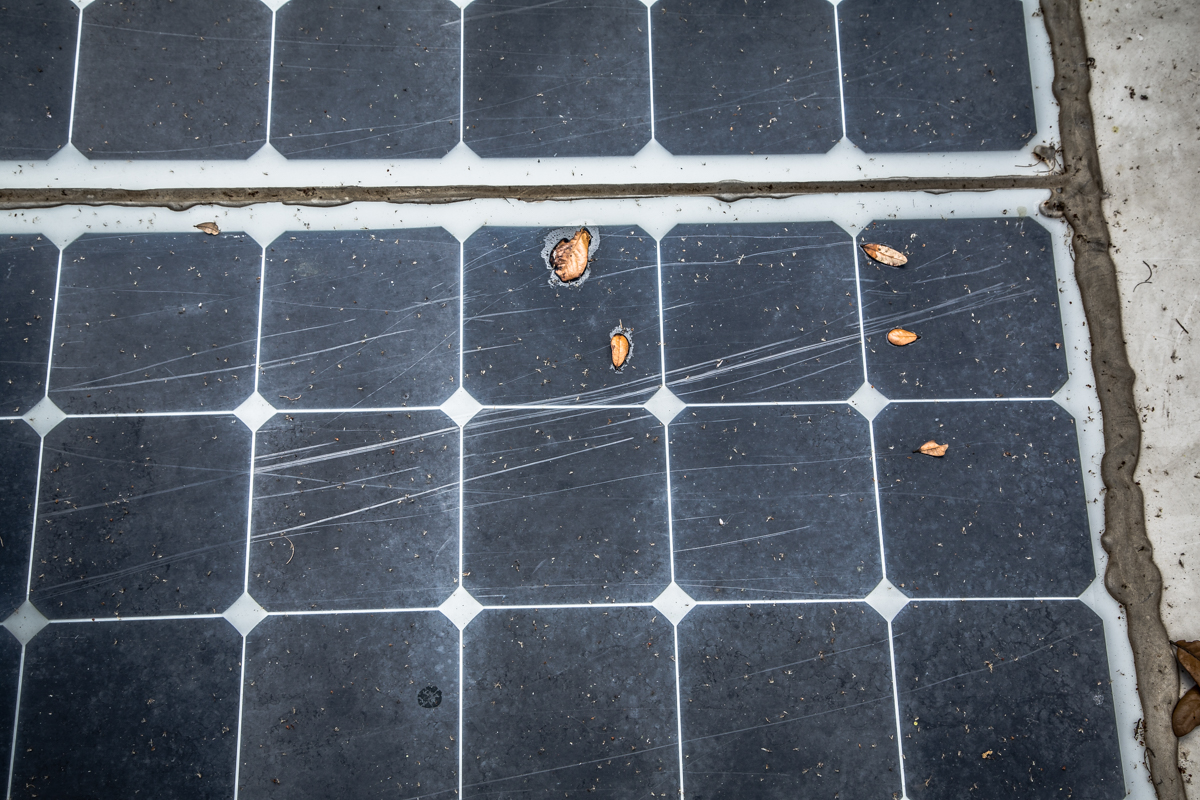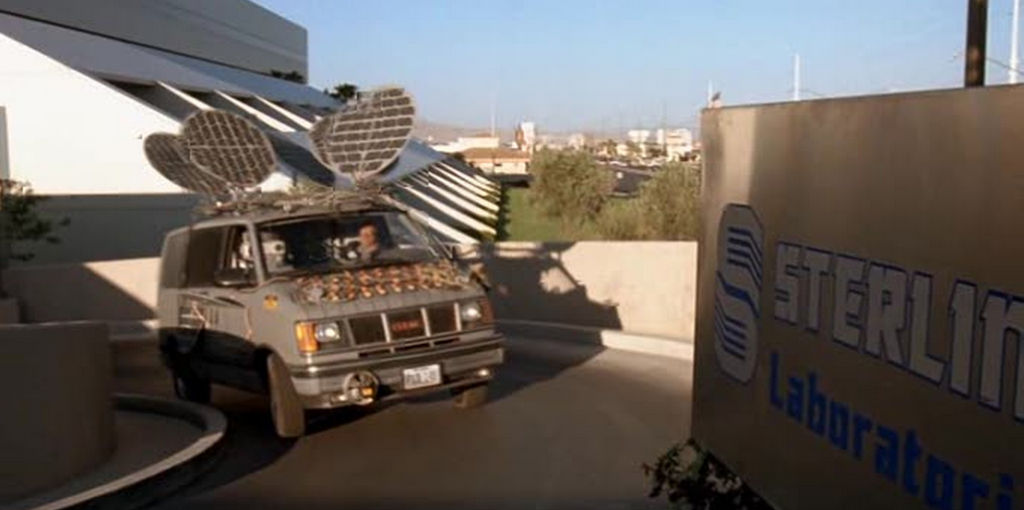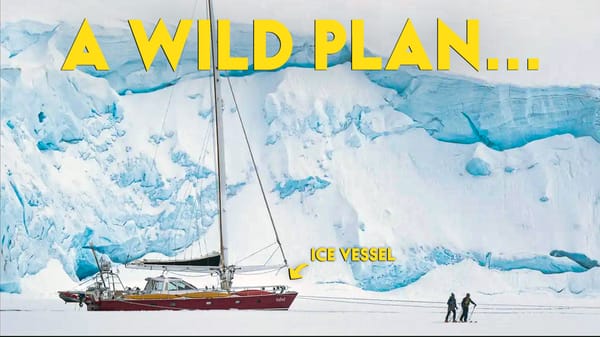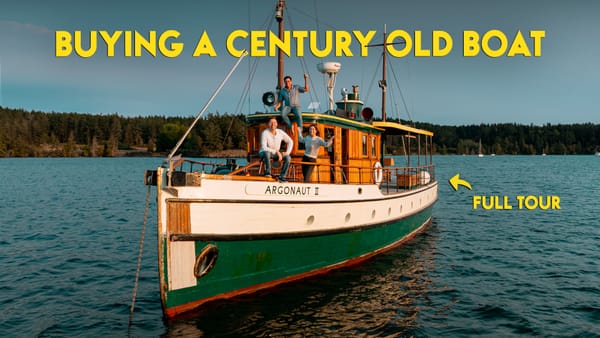Flexible RV Solar Issues Revealed – Our One Year Review

We’ve had the flexible solar panels installed on our RV for a little over a year and we have some mixed emotions about them. Are flat solar panels necessary? Is flexible solar really worth the extra money? Will flexible solar panels last as long as tempered glass panels? Instead of just talking about the newest RV solar panel technology I figured: why not show you our flexible solar panel issues and let you decide for yourself.
I’m not going to cover everything in detail because we’ve only had these thin flexible solar panels for a year, it would be the equivalent of me attempting to write the definitive guide to a random town we’ve only spent a couple days in. I will, however, touch on a few more details of the Good and Bad of our Flexible RV Solar experience.
Here’s our setup:
1x – Go Power! 200W Flexible Mono Crystalline Solar Kit

3x – Go Power! 100W Flexible Solar Expansion Kit

DOWNSIDES
Cupping – Extreme temperatures can make the flexible panels slightly warp causing water, dirt, dust and sand to buildup in these little “cups” on the panels.
Flat Roofs – Our RV has a pretty flat roof, so when we park and level our coach the panels are basically flat. Water does not run off the sides evenly and sometimes the water just sits on top of the panel causing more sediment to collect on the panels.
Scratches – When cleaning the flex panels the sediment caught in the “cups” can scratch the surface of the panel (to be clear you’re not scratching the solar cells, just the coating that covers them).
Gouges – We go on some crazy roads with low hanging branches when driving into National Forests, BLM lands, Wineries, Farms and even some national or state parks. We’ve picked up a few small gouges in the panels from these low hanging branches over the past year. I am not sure if the gouges are deep enough to damage the solar cell or if they have just damaged the coating around the cells, to my untrained eye it appears to be only in the coating.
Non-Tilting – When we installed our brand new flexible solar panels we glued them down so there were no screws penetrating through the RV roof, the issue here is the solar panels can’t be tilted for maximum sun exposure which is especially beneficial during the winter months when the sun is lower on the horizon.
Warranty – Currently the warranty on our flexible panels is 10 years which is perfectly fine by us because 1) we know we’re not going to have this RV for more than 10 years and 2) in 10 years I bet there will be much better, more efficient solar technology, so in theory I probably won’t want to keep any solar panels for more than 10 years. That said the 10 year warranty doesn’t come close to the standard 30 year warranty on the tempered glass solar panels.

UPSIDES
No screws – The less holes in an RV roof the better, I don’t think anyone will argue with that!
Lightweight – The flexible solar panels are a tiny fraction of the weight of the more traditional tempered glass solar panel. Its crazy SCARY how many people we see on the road who are maxed out (or WAY OVER) on their GCVWR. This is not a joke people, you are putting yourself and everyone else on the road in danger by going over your RVs weight limits. Please for the safety of everyone consider your weight at all times and before purchasing a solar setup. I’ll step down off my podium now…
Better Aerodynamics – I’m not gonna tell you that installing flexible solar panels will provide you with better fuel economy or a better average MPG readout on your RV computer display…but I can tell you flat is more aerodynamic, and better aerodynamics equals better gas mileage! So read between the lines?!? Naahhhhh, seriously though, these flexible panels are more aerodynamic.
Bendable and Flexible – The greatest benefit to these solar flex panels has got to be the fact they can bend and flex! You just spent $100 grand on a brand new Airstream so why not pony up a small percentage more for the flexible solar panels that hide on your roof vs. the tempered glass eye-sores that make your new investment look like something you’d see in a Honey I Shrunk the Kids movie? Flexible panels should work great for vintage bus conversions, tiny teardrop trailers like the TAB, Airstream trailers, UFO’s, etc…pretty much anything that has a curved roof.
Your Imagination is the Limit – Sounds corny right? It’s not! We saw one guy custom rig his flex panels as window awnings on the “non-awning” side of his RV (I didn’t take a photo unfortunately). We met another guy that created a removable shade structure over his electric bike. My favorite application has got to be the “Lazy Susan Portable Panel Tracking Array” we saw at Burning Man. If you’re creative don’t just be boring and put panels on your roof like people have done in years past; these flat, flexible and lightweight solar panels are the future, so think outside the box and make something cool with them (then send me photos and we can create a small business together to market your ingenious creation; just kidding, I’d call the guys at that Shark Tank TV show if I were you).
You can dance on them – Some haters out there have said they’d never dance on their panels…well, we were told by GoPower! to dance away and these flex panels can handle it. Granted we still wouldn’t recommend this for safety issues or the fact you may have a rock stuck in your shoe that can damage the panels, but nonetheless we installed, we tested and we danced!
OUR TAKEAWAY AFTER 1 YEAR
Even with our solar panels as dirty and beat up as they were during filming we were still able to bring in 26amps in the afternoon winter sun of central Florida. So the GIANT, burning question is: With cupping and minor surface scratches is there really any noticeable degradation of solar power coming into the batteries? Unfortunately, I think the answer will only come after a few more years of testing.
Flexible panels are great if you need them! There are loads of factors that might make flexible solar panels the best choice for your RV or motorhome but these are the few BIG advantages that come to my mind: If you are concerned about weight or aerodynamic issues, if you have a rounded roof like a vintage bus or airstream, or you just want to have the latest solar technology installed on your rig.
For installations like ours, with a huge amount of flat, unobstructed roof space and plenty of weight before we get near the GCVWR, I’d recommend people to stick with the tempered glass solar panels. Tempered glass panels are proven technology with a longer warranty and they’re about 25% less expensive. In fact we are picking up our next RV this month and we’re planning to install a huge array of Tempered Glass solar panels instead of the flex panels (join our email list and stay tuned for that article).
Remember, these are just my opinions from our experience and I am no expert. What do you think? Are flexible solar panels better for your RV? Share your thoughts in the comments below and let’s help the solar manufacturers understand our wants and needs for future products!
2015 Update: We have an all new improved solar set up. Click the button to see our most recent upgrades:
Our Best RV Solar Set Up EverIf you want to know where we filmed this video, its the Hickory Hammock location from this post: Fabulous Free Camping In Florida
Disclaimer – Nobody paid for this article, it’s truly our experience with the GoPower! Flex Panels installed on our motorhome. Remember, all brands of flexible solar panels are different so you might find different results.





